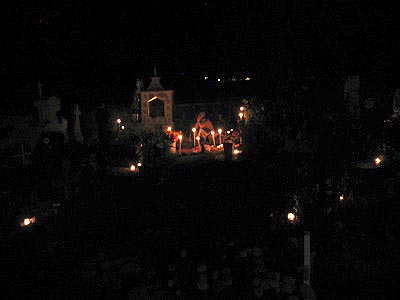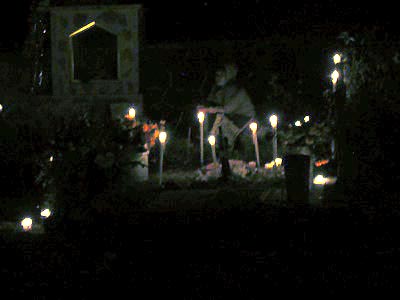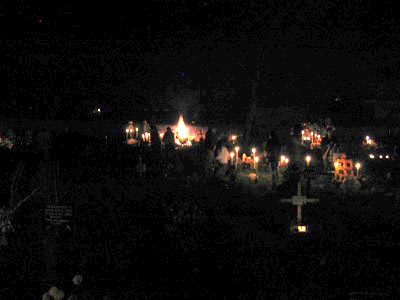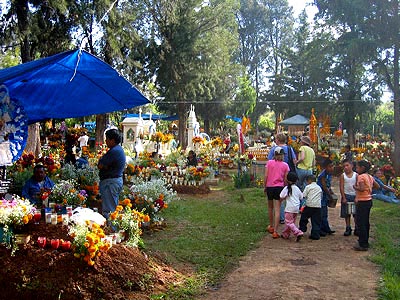
The village of Tzintzuntzan
if famous
for its celebration of the Dia de Muertos. A former capital
of
the Tarascan people, the indigenous P'urepecha
culture is still strong in the town (as well as in other
villages
around Lake Pátzcuaro). Dia de Muertos (Nov 2) is
a hybrid
celebration of the European "All souls day" (brought by the spaniards)
and indigenous practices of honoring their ancestors. I have
read
that the P'urepecha believed that the souls of the ancestors could
return to earth one day each year, a month after the fall
equinox. That timing coincided fairly well with All
Souls
Day leading to the current celebration on Nov 1 and 2. The
national holiday is celebrated all over Mexico, but the old
customs are particularly strong in this area.
Families decorate the graves and stay up all night in the cemetery, sitting around the gravestones, remembering the dead and sharing stories. Graves are covered with bouquets of marigolds, and surrounded with offerings of food, pictures of the deceased, and many many candles.
In Tzintzuntzan, that wake has become a major tourist attraction.
We arrived in mid afternoon on Nov 1, when people were finishing their decorations. The marigolds were brilliantly lit by the afternoon sun, and their scent pervaded the whole area. It was a relaxed time to stroll through the cemetery and watch the families settle in.
Families decorate the graves and stay up all night in the cemetery, sitting around the gravestones, remembering the dead and sharing stories. Graves are covered with bouquets of marigolds, and surrounded with offerings of food, pictures of the deceased, and many many candles.
In Tzintzuntzan, that wake has become a major tourist attraction.
We arrived in mid afternoon on Nov 1, when people were finishing their decorations. The marigolds were brilliantly lit by the afternoon sun, and their scent pervaded the whole area. It was a relaxed time to stroll through the cemetery and watch the families settle in.
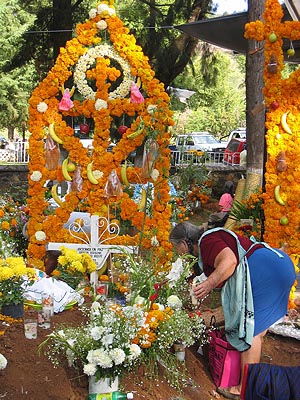
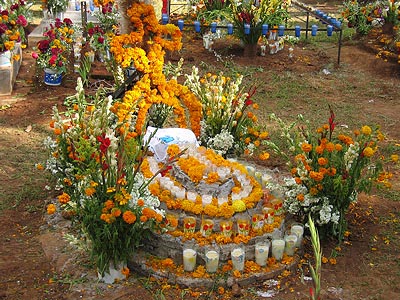
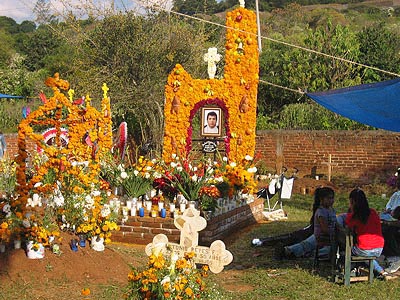
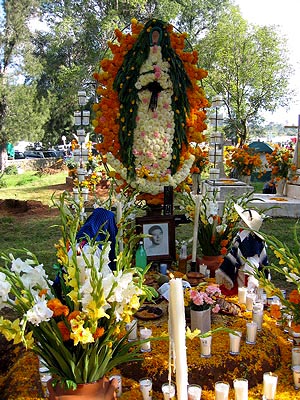
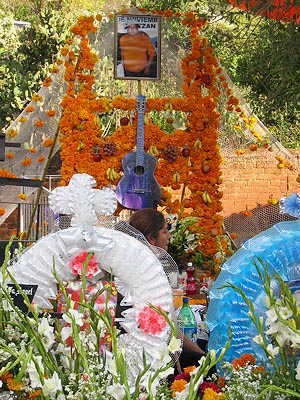
At dark, the candles were
lit and the
panteon (cemetery) glowed with the light of thousands of candles.
The crowds of tourists also arrived to see the spectacle, but
through it all small family groups sat by the graves of their relatives
and settled in for the night.
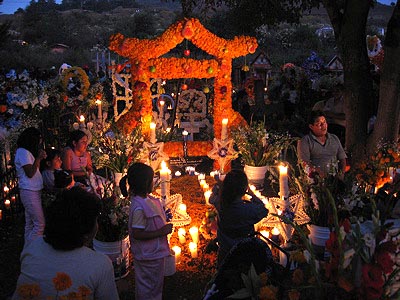
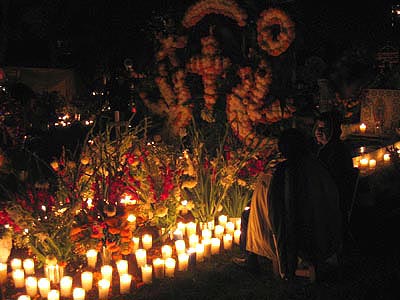
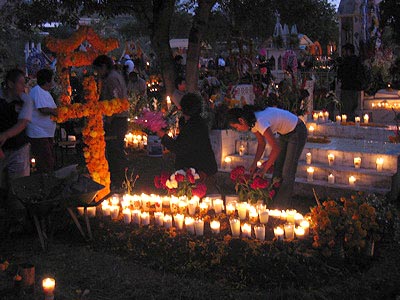
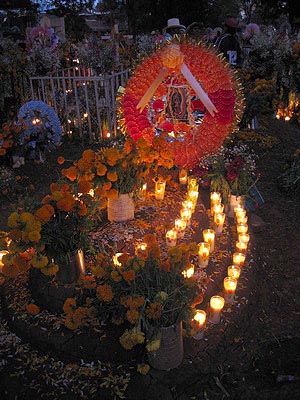
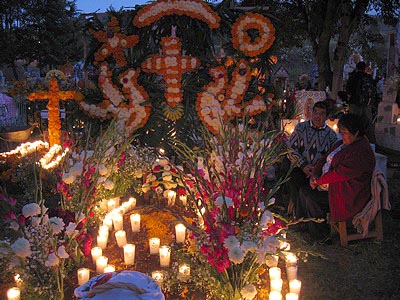
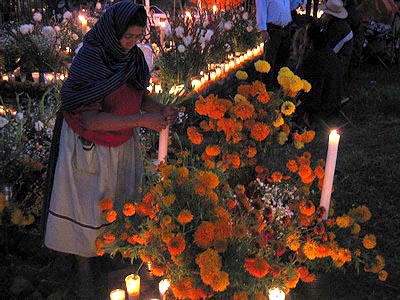
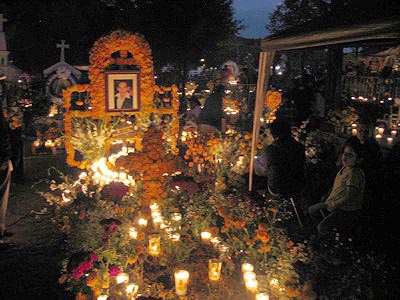
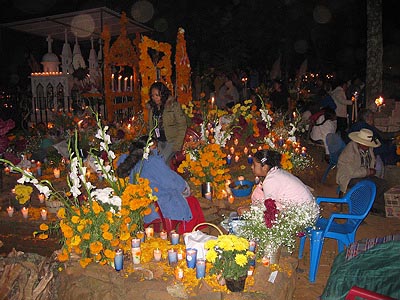
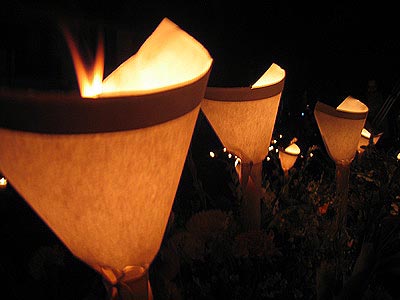
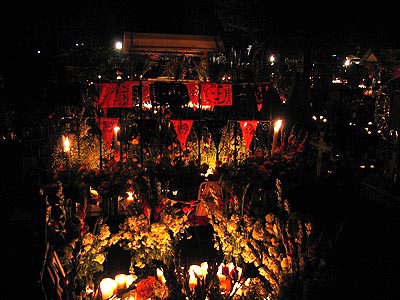
The candles and colors were spectacular in the dark, but it was hard for me to maintain the same reverence amid the crowds.
The center of town was set up with food tents, craft vendors, and music, but we basically skipped that part.
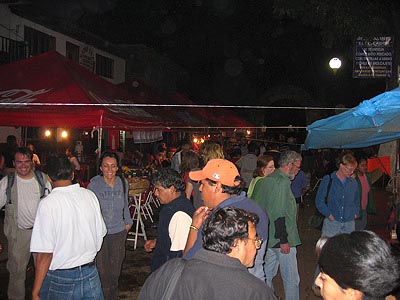
Ihuatzio
We left Tzintzuntzan a
little after 9:00
and went to the nearby town of Ihuatzio. There, the cemetery
was
also lit with candles but the mood was entirely different.
Instead of feeling like a show for the many thousands of
tourists in Tzintzuntzan, there were just a few families in the small
cemetery. We were only there for a short time and we left
well
before midnight, but it felt much more like a traditional wake for the
dead.
